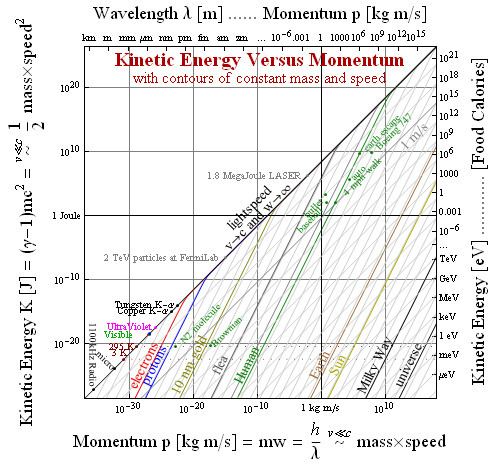 | ||
Planck momentum is the unit of momentum in the system of natural units known as Planck units. It has no commonly used symbol of its own, but can be denoted by
where
In SI units Planck momentum is approximately 6.5 kg·m/s. It is equal to the Planck mass multiplied by the speed of light, usually associated with the momentum of primordial photons in some prevailing Big Bang models. Unlike most of the other Planck units, Planck momentum occurs on a human scale. By comparison, running with a five-pound object (108×Planck mass) at an average running speed (10−8×speed of light in a vacuum) would give the object Planck momentum. A 70 kg human moving at an average walking speed of 1.4 m/s (5.0 km/h; 3.1 mph) would have a momentum of about 15
